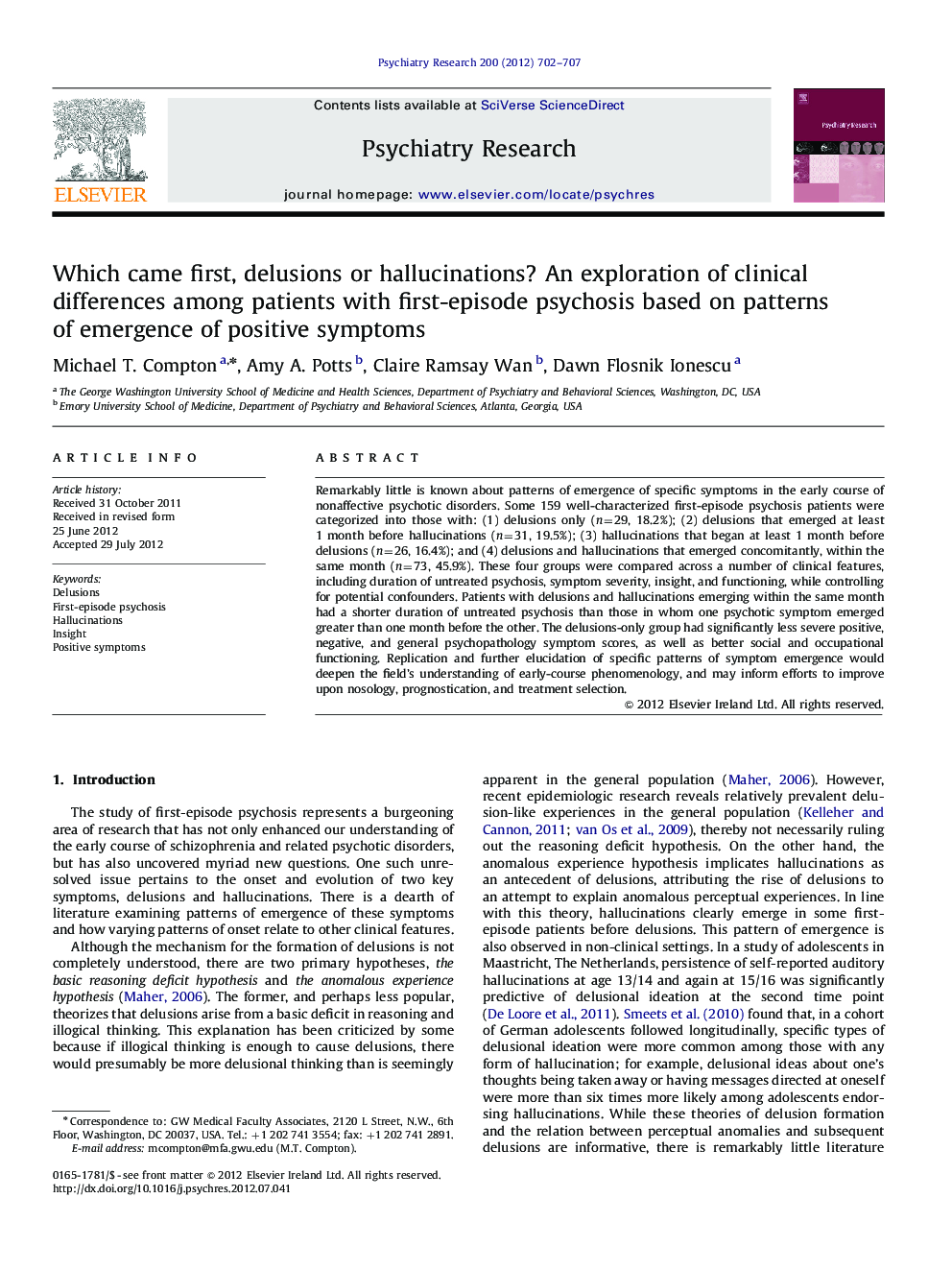| Article ID | Journal | Published Year | Pages | File Type |
|---|---|---|---|---|
| 6816168 | Psychiatry Research | 2012 | 6 Pages |
Abstract
Remarkably little is known about patterns of emergence of specific symptoms in the early course of nonaffective psychotic disorders. Some 159 well-characterized first-episode psychosis patients were categorized into those with: (1) delusions only (n=29, 18.2%); (2) delusions that emerged at least 1 month before hallucinations (n=31, 19.5%); (3) hallucinations that began at least 1 month before delusions (n=26, 16.4%); and (4) delusions and hallucinations that emerged concomitantly, within the same month (n=73, 45.9%). These four groups were compared across a number of clinical features, including duration of untreated psychosis, symptom severity, insight, and functioning, while controlling for potential confounders. Patients with delusions and hallucinations emerging within the same month had a shorter duration of untreated psychosis than those in whom one psychotic symptom emerged greater than one month before the other. The delusions-only group had significantly less severe positive, negative, and general psychopathology symptom scores, as well as better social and occupational functioning. Replication and further elucidation of specific patterns of symptom emergence would deepen the field's understanding of early-course phenomenology, and may inform efforts to improve upon nosology, prognostication, and treatment selection.
Related Topics
Life Sciences
Neuroscience
Biological Psychiatry
Authors
Michael T. Compton, Amy A. Potts, Claire Ramsay Wan, Dawn Flosnik Ionescu,
